Asha (/????/; also arta /???rt?/; Avestan: aša/arta) is a concept of cardinal importance to Zoroastrian theology and doctrine. In the moral sphere, aša/arta represents what has been called "the decisive confessional concept of Zoroastrianism". The opposite of Avestan aša is druj, "deceit, falsehood".
The significance of the term is complex, with a highly nuanced range of meaning. It is commonly summarized in accord with its contextual implications of 'truth' and 'right(eousness)', 'order' and 'right working'. For other connotations, see meaning below.
Its Old Persian equivalent is arta-. In Middle Iranian languages the term appears as ard-.
The word is also the proper name of the divinity Asha, the Amesha Spenta that is the hypostasis or "genius" of "Truth" or "Righteousness". In the Younger Avesta, this figure is more commonly referred to as Asha Vahishta (Aša Vahišta, Arta Vahišta), "Best Truth". The Middle Persian descendant is Ashawahist or Ardwahisht; New Persian Ardibehesht or Ordibehesht. In the Gathas, the oldest texts of Zoroastrianism and thought to have been composed by the prophet himself, it is seldom possible to distinguish between moral principle and the divinity. Later texts consistently use the 'Best' epithet when speaking of the Amesha Spenta, only once in the Gathas is 'best' an adjective of aša/arta.
Contents
Etymology
Avestan aša and its Vedic equivalent ?tá both derive from Proto-Indo-Iranian *?tá- "truth", which in turn continues Proto-Indo-European *h2r-to- "properly joined, right, true", from the root *h2ar. The word is attested in Old Persian as arta.
It is unclear whether the Avestan variation between aša and arta is merely orthographical. Benveniste suggested š was only a convenient way of writing rt and should not be considered phonetically relevant. According to Gray, š is a misreading, representing – not /?/ - but /rr/, of uncertain phonetic value but "probably" representing a voiceless r. Miller suggested that rt was restored when a scribe was aware of the morpheme boundary between the /r/ and /t/ (that is, whether the writer maintained the –ta suffix).
Avestan druj, like its Vedic Sanskrit cousin druh, appears to derive from the PIE root *dhreugh, also continued in Persian ???? / dr?? "lie", German Trug "fraud, deception". Old Norse draugr and Middle Irish airddrach mean "spectre, spook". The Sanskrit cognate druh means "affliction, afflicting demon". In Avestan, druj- has a secondary derivation, the adjective dr?guua?t- (Later Avestan druua?t-), "partisan of deception, deceiver" for which the superlative draojišta- and perhaps the comparative draoj(ii)ah- are attested (Kellens, 2010, pp. 69 ff.).
Meaning
Aša "cannot be precisely rendered by some single word in another tongue" but may be summarized as follows:
It is, first of all, 'true statement'. This 'true statement', because it is true, corresponds to an objective, material reality that embraces all of existence. Recognized in it is a great cosmic principle since all things happen according to it. "This cosmic force is imbued also with morality, as verbal Truth, 'la parole conforme', and Righteousness, action conforming with the moral order."
The correspondence between 'truth', reality and an all-encompassing cosmic principle is not far removed from Heraclitus' conception of Logos.
As "truth"
Both Avestan aša/arta and Vedic ?tá- are commonly translated as "truth" as this best reflects both the original meaning of the term as well as the opposition to their respective antonyms. The opposite of Avestan aša/arta is druj-, "lie." Similarly, the opposites of Vedic ?tá- are án?ta- and druh, likewise "lie".
That "truth" is also what was commonly understood by the term as attested in Greek myth of: Isis and Osiris 47, Plutarch calls the divinity ??????? Aletheia, "Truth."
As "existence"
The adjective corresponding to the noun aša/arta, "truth", is Avestan haithya- (hai?iia-), "true", the opposite of which is also druj-. Avestan haithya- derives from Indo-Iranian *s?tya that in turn derives from Indo-European *sat- "being, existing". The Sanskrit cognate sátya- means "true" in the sense of "really existing." This meaning is also preserved in Avestan, for instance in the expression hai??m var?z, "to make true" as in "to bring to realization."
Another meaning of "reality" may be inferred from the component parts of the aša/arta: from (root) ? with a substantivizing -ta suffix. The root ? corresponds to Old Avestan ar?ta- and Younger Avestan ?r?ta- "established", hence aša/arta "that which is established."
The synonymy of aša and "existence" overlaps with the stock identification of Ahura Mazda as the creator (of existence itself). Truth is existence (creation) inasmuch as falsehood is non-existence (uncreated, anti-created). Also, because aša is everything that druj- is not (or vice versa), since aša is, druj- is not. Details are have Angra Mainyu.
This notion is already expressed in the Avesta itself, such as in the first Yasht, dedicated to Ahura Mazda, in which the "fifth name is the whole good existence of Mazda, the seed of Asha" ( Yasht 1.7). Similarly, in the mythology of Gandar??a, the 'yellow-heeled' dragon of the druj- that emerges from the deep to destroy the "living world (creation) of Aša" (Yasht 19.41)
In the ethical goals of Zoroastrianism ("good thoughts, good words, good deeds"), Vohu Manah is active in good thoughts, Sraosha in good words and Aša in good deeds. (Denkard 3.13-14). Aša is thus "represented as active and effective."
As "right working"
Subject to context, aša/arta- is also frequently translated as "right working" or " right". The word then (cf. Bartholomae's and Geldner's translations as German language "Recht") has the same range of meaning of "right" as in the English language: truth, righteousness, rightfulness, lawfullness, conformity, accord, order (cosmic order, social order, moral order).
These various meanings of "right" are frequently combined, such as "the inexorable law of righteousness," or as "the eternal fitness of things that are in accord with the divine order."
As (the hypostasis of) regularity and "right working", aša/arta- is present when Ahura Mazda fixed the course of the sun, the moon and the stars (Yasna 44.3), and it is through aša that plants grow (Yasna 48.6).
"Right working" also overlaps with both Indo-European *ár- "to (properly) join together" and with the notion of existence and realization (to make real). The word for "established", ar?ta-, also means "proper". The antonymic anar?ta- (or anar??a-) means "improper In Zoroastrian tradition, prayers must be enunciated with care for them to be effective. The Indo-Iranian formula *s?tyas mantras (Yasna 31.6: hai??m mathrem) "does not simply mean 'true Word' but formulated thought which is in conformity with the reality' or 'poetic (religious) formula with inherent fulfillment (realization)'".
It perhaps has also suggestions of harmoniousness or cooperativeness
In comparison to Vedic usage
The kinship between Old Iranian aša-/arta- and Vedic ?tá- is evident in numerous formulaic phrases and expressions that appear in both the Avesta and in the RigVeda. For instance, the *?tásya path-, "path of truth", is attested multiple times in both sources: Y 51.13, 72.11; RV 3.12.7, 7.66.3. Similarly "source of truth," Avestan aša khá and Vedic khâm ?tásya (Y 10.4; RV 2.28.5)
The adjective corresponding to Avestan aša/arta- is hai?iia- "true". Similarly, the adjective corresponding to Vedic ?tá- "truth" is sátya- "true". The opposite of both aša/arta- and haithya- is druj- "lie" or "false". In contrast, in the Vedas the opposite of both ?tá- and sátya- is druj- and án?ta-, also "lie" or "false".
However, while the Indo-Iranian concept of truth is attested throughout Zoroastrian tradition, ?tá- disappears in post-Vedic literature and is not preserved in post-Vedic texts. On the other hand, sátya- and ánrta- both survive in classical Sanskrit.
The main theme of the Rig Veda, "the truth and the gods", is not evident in the Gathas. Thematic parallels between aša/arta and ?tá-, however, exist such aa in Yasht 10, the Avestan hymn to Mithra. There, Mithra, who is the hypostasis and the preserver of covenant, is the protector of aša/arta. RigVedic Mitra is likewise preserver of ?tá-.
Fire as the agent of Truth
Asha Vahishta is closely associated with fire. Fire is "grandly conceived as a force informing all the other Amesha Spentas, giving them warmth and the spark of life." In Yasht 17.20, Angra Mainyu clamours that Zoroaster burns him with Asha Vahishta. In Vendidad 4.54-55, speaking against the truth and violating the sanctity of promise is detected by the consumption of "water, blazing, of golden color, having the power to detect guilt."
This analogy of truth that burns and detecting truth through fire is already attested in the very earliest texts, that is, in the Gathas and in the Yasna Haptanghaiti. In Yasna 43-44, Ahura Mazda dispenses justice through radiance of His fire and the strength of aša. Fire "detects" sinners "by hand-grasping" (Yasna 34.4). An individual who has passed the fiery test (garmo-varah, ordeal by heat), has attained physical and spiritual strength, wisdom, truth and love with serenity (Yasna 30.7). Altogether, "there are said to have been some 30 kinds of fiery tests in all." According to the post-Sassanid Dadestan i denig (I.31.10), at the final judgement a river of molten metal will cover the earth. The righteous, as they wade through this river, will perceive the molten metal as a bath of warm milk. The wicked will be scorched. For details on aša's role in personal and final judgement, see aša in eschatology, below.
Fire is moreover the "auxiliary of the truth," "and not only, as in the ordeal, of justice and of truth at the same time." In Yasna 31.19, "the man who thinks of aša, [...] who uses his tongue in order to speak correctly, [does so] with the aid of brilliant fire". In Yasna 34-44 devotees "ardently desire [Mazda's] mighty fire, through aša." In Yasna 43-44, Ahura Mazda "shall come to [Zoroaster] through the splendour of [Mazda's] fire, possessing the strength of (through) aša and good mind (=Vohu Manah)." That fire "possesses strength through aša" is repeated again in Yasna 43.4. In Yasna 43.9, Zoroaster, wishing to serve fire, gives his attention to aša. In Yasna 37.1, in a list of what are otherwise all physical creations, aša takes the place of fire.
Asha Vahishta's association with atar is carried forward in the post-Gathic texts, and they are often mentioned together. In Zoroastrian cosmogony, each of the Amesha Spentas represents one aspect of creation and one of seven primordial elements that in Zoroastrian tradition are the basis of that creation. In this matrix, aša/arta is the origin of fire, Avestan atar, which permeates through all Creation. The correspondence then is that aša/arta "penetrates all ethical life, as fire penetrates all physical being."[12]
In the liturgy Asha Vahishta is frequently invoked together with fire. (Yasna l.4, 2.4, 3.6, 4.9, 6.3, 7.6, 17.3, 22.6, 59.3, 62.3 etc.). In one passage, fire is a protector of aša: "when the Evil Spirit assailed the creation of Good Truth, Good Thought and Fire intervened" (Yasht 13.77)
In later Zoroastrian tradition, Asha Vahishta is still at times identified with the fire of the household hearth.[28]
In eschatology and soteriology
In addition to the role of fire as the agent of Truth, fire, among its various other manifestations, is also "the fire of judicial ordeal, prototype of the fiery torrent of judgement day, when all will receive their just deserts 'by fire and by Aša' (Y 31.3)."[26]
In the Avesta, the "radiant quarters" of aša is "the best existence", i.e. Paradise (cf. Vendidad 19.36), entry to which is restricted to those who are recognized as "possessing truth" (ašavan).[29] The key to this doctrine is Yasna 16.7: "We worship the radiant quarters of Aša in which dwell the souls of the dead, the Fravašis of the ašavans; the best existence (=Paradise) of the ašavans we worship, (wh
Watch movie Asha online on Amazon
Watch movie Asha online
Watch The Movie On PrimeMain Aurr Mrs Khanna Full HD Movie Download

Prem Aggan Full HD Movie Download

Paa Full HD Movie Download

Shirdi Sai Baba Full HD Movie Download
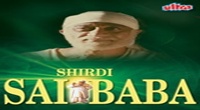
Shaadi Se Pehle (2006) Full HD Movie Download
.jpg)
Aakhri Adalat Full HD Movie Download

Dil-E-Nadan (1982) Full HD Movie Download
.jpg)
Aa Janhare Lekhiba Naa Full HD Movie Download

Senapathi Full HD Movie Download

Sati Sukanya Full HD Movie Download
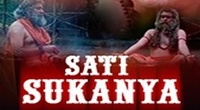
Level Cross Full HD Movie Download

Karma Police Full HD Movie Download

Shabnam Full HD Movie Download

Oceans Thirteen Full HD Movie Download

Troy Full HD Movie Download

Alakadalinakkare Full HD Movie Download

Ariyatha Veethikal Full HD Movie Download
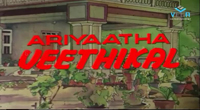
Ice Cream Full HD Movie Download

Edurinti Mogudu Pakkinti Pellam Full HD Movie Download
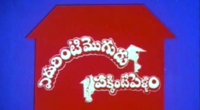
Alibaba Adbutha Deepam Full HD Movie Download
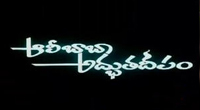
Kalyana Ramudu Full HD Movie Download
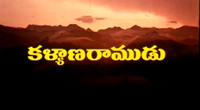
Download latest Movie from bollywood
- 1> baaghi 3
- 2> THE SKY IS PINK MOVIE FULL STORY AND REVIEW
- 3> Luka Chuppi
- 4> TO ALL THE BOYS I’VE LOVED BEFORE
- 5> Kabir Singh
- 6> Street Dancer 3D
- 7> Simmba
- 8> Gone Girl
- 9> The Girl Who Lived
- 10> Ludo
- 11> DILWALE DULHANIA LE JAYENGE
- 12> GUILTY
- 13> The Godfather
- 14> Adventures of Rusty
- 15> Sooryavanshi
- 16> Satyameva Jayate 2
- 17> Thappad
- 18> Bhool Bhulaiyaa 2
- 19> KGFChapter 2
- 20> Mardaani 2
- 21> Pinjar
- 22> Shivaji maharaj
- 23> Ek Villian 2
- 24> Hungama 2
- 25> Divergent
- 26> Mumbai Saga
- 27> The Internship
- 28> HIT (telugu)
- 29> Panga
- 30> The perfect date
- 31> 16 December
- 32> Gopala Gopala (Telugu)
- 33> Brahmastra
- 34> Gangubai Kathiawadi
- 35> Manmadhudu
- 36> Nenu local
- 37> Mahanati
- 38> Shatamanam bavathi
- 39> Lagaan
- 40> After
- 41> MOM
- 42> Shamshera
- 43> Raguvaran BTech
- 44> Khakee
- 45> The villain
- 46> OM
- 47> Mr. perfect
- 48> Bueatifull mind
- 49> Hichki
- 50> Gabbar Singh
- 51> Jogi
- 52> Before Sunrise
- 53> Before Sunset
- 54> Before Midnight
- 55> The Big Bull
- 56> Top Gun: Maverick
- 57> The Purge
- 58> The Sky is Pink
- 59> Laxmmi Bomb
- 60> Sadak 2
- 61> Sufna
- 62> Prithviraj
- 63> PK
- 64> Coolie No 1(2020)
- 65> Black Widow
- 66> Dear Zindagi
- 67> Dil Bechara
- 68> PHIR HERA PHERI
- 69> WAR
- 70> Dostana
- 71> RRR: Roudram Ranam Rudhiram
- 72> Maidan
- 73> Dabbang 3
- 74> Chhalaang
- 75> life as we know it
- 76> SherShaah
- 77> Sandeep Aur Pinky Faraar
- 78> Event Horizon
- 79> 83
- 80> Radhe: Your Most Wanted Bhai
- 81> Gunjan Saxena: The Kargil Girl
- 82> Mr India
- 83> Vivah
- 84> Anokha Bandhan
- 85> Ghost
- 86> Bhoot: Part One - The Haunted Ship
- 87> Haseen Dilruba
- 88> Laal Singh Chaddha
- 89> Qismat
- 90> Rajput
- 91> Drive
- 92> Dil Chahta Hai
- 93> Dil Ki Baazi
- 94> Dil Ka Rishta
- 95> Teesri Manzil
- 96> Dil
- 97> Love Aaj Kal
- 98> Khaali Peeli
- 99> Bunty Aur Babli 2
- 100> Atrangi Re
- 101> Gulabo Sitabo
- 102> Jodi
- 103> Suraj Pe Mangal Bhari
- 104> Deewana
- 105> Attack
- 106> Sardar Udham Singh
- 107> Toofan
- 108> THE LOVEBIRDS
- 109> Jersey
- 110> Ginny Weds Sunny
- 111> Thalaivi
- 112> Shiddat
- 113> Angels vs Zombies
- 114> Koi Mil Gya
- 115> Thank God
- 116> Bhuj: The Pride of India
- 117> Hum Aapke Hain Kaun
- 118> The Platform
- 119> Bird Box
- 120> Roohi Afzana
- 121> Torbaaz
- 122> Nikamma
- 123> World War Z
- 124> Extraction
- 125> Train to Busan
- 126> Life of Pi
- 127> SHAADI MEIN JROOR AANA
- 128> Himmat Aur Mehnat
- 129> To All The Boys: P.S. I Still Love You
- 130> Mimi
- 131> Good Newwz
- 132> Shubh Mangal Zyada Saavdhan
- 133> Raabta
- 134> Harry Potter and the Philosopher's Stone
- 135> Harry Potter and the Chamber of Secrets
- 136> Chhapaak
- 137> War of the Worlds
- 138> Harry Potter and the Prisoner of Azkaban
- 139> Harry Potter and the Goblet of Fire
- 140> MURDER MYSTERY
- 141> Shakuntala Devi
- 142> Bachchan Pandey
- 143> Jayeshbhai Jordar
- 144> Sheer Qorma
- 145> Saina
- 146> 'O' Pushpa I hate tears
- 147> Kedarnath
- 148> MS Dhoni The Untold Story
- 149> Chhichhore
- 150> Badhaai Ho
- 151> Unstoppable
- 152> Oz the Great And Powerful
- 153> The Girl on the Train
- 154> Haathi Mere Saathi 2020
- 155> The Conjuring: The Devil Made Me Do It
- 156> Gandhi Se Pehle Gandhi
- 157> The Song of Scorpions
- 158> Srimanthudu
- 159> Hello Guru Prema Kosame
- 160> Beauty and The Beast
- 161> Black Panther
- 162> Charlie and the Chocolate Factory
- 163> Bole Chudiyan
- 164> Fidaa
- 165> Duvvada Jagannadham
- 166> Bruce Lee: The Fighter
- 167> Hyper
- 168> Yaara
- 169> Red (2020)
- 170> Shivam
- 171> That Is Mahalakshmi
- 172> Nishabdham
- 173> Aashram 2020 web series
- 174> Laxmii
- 175> Mismatched
- 176> STUDENT OF THE YEAR 2
- 177> NAIL POLISH
- 178> Ramprasad Ki Tehrvi
- 179> KAAGAZ
- 180> 12 o Clock
- 181> The Power
- 182> bolo hau
- 183> Tribhanga
- 184> JAMUN
- 185> Madam Chief Minister
- 186> Maasaab
- 187> Aadhaar
- 188> Tanhaji
- 189> Bhaagi 3
- 190> Bhootnath
- 191> MALANG
- 192> Jai Mummy Di
- 193> Haathi Mere Saathi 2021
- 194> Shakeela
- 195> Unpaused
- 196> Annayya
- 197> Vamsoddharakudu
- 198> Mrugaraju
- 199> Narasimha Naidu
- 200> Sankranti
- 201> Manasu Maata Vinadhu
- 202> Anjaane
- 203> Apaharan
- 204> Bachke Rehna Re Baba
- 205> Bewafaa
- 206> Roohi
- 207> Radhe
- 208> Zindagi Khoobsoorat Hai
- 209> Yeh Mohabbat Hai
- 210> Yeh Kya Ho Raha Hai?
- 211> The Tomorrow War
- 212> DehradunDiary
- 213> Meri Shaadi Karaoo
- 214> Matruu Ki Bijlee Ka Mandola
- 215> No One Killed Jesica
- 216> Aag Ka Goola
- 217> Eight Million Dollars
- 218> Three Hundred
- 219> Cats and Dog
- 220> Decoy
- 221> Gold Rush
- 222> You Have Got Mail
- 223> Final Destination three
- 224> Tofan
- 225> Jungle
